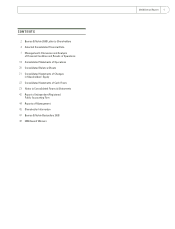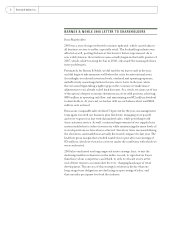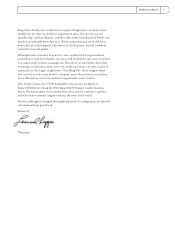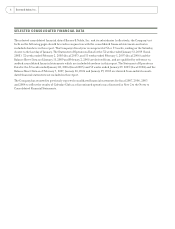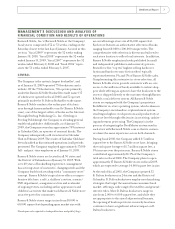Barnes and Noble 2008 Annual Report Download - page 3
Download and view the complete annual report
Please find page 3 of the 2008 Barnes and Noble annual report below. You can navigate through the pages in the report by either clicking on the pages listed below, or by using the keyword search tool below to find specific information within the annual report.
BARNES & NOBLE 2008 LETTER TO SHAREHOLDERS
Dear Shareholder:
2008 was a year of unprecedented economic upheaval, which caused almost
all business sectors to suff er, especially retail. The bookselling industry was
aff ected as well, posting declines at levels never before experienced. As is
now widely known, the retail recession actually began in the fourth quarter of
2007, which, while lowering the bar in 2008, only made the ensuing declines
more problematic.
Fortunately, for Barnes & Noble, we did read the tea leaves early in the year,
and did begin to take measures well before the crisis became national news.
Accordingly, we reduced inventory levels, overhead and operating expenses,
and eff ectively ceased negotiations for new stores. Later in the year, when
the recession began taking a tighter grip on the economy, we made minor
adjustments to our already scaled back forecasts. As a result, we came out of one
of the nation’s deepest economic downturns in a very solid position, achieving
$150 million in operating cash fl ow, and maintaining our $52 million dividend
to shareholders. At year end, we had no debt on our balance sheet and $282
million cash on hand.
Even as our comparable sales declined 5.4 percent for the year, our management
team again executed our business plan fl awlessly, managing store payroll
and store expenses in line with diminished sales, while providing world
class customer service. As well, continued improvement of our supply chain
system enabled us to reduce inventories while maintaining the same levels of
in stock positions we have always achieved. Inventory turns increased during
the slowdown, and markdowns actually decreased compared to last year. The
healthier gross margin that resulted enabled us to post after tax earnings of
$76 million, which we viewed as a victory under the conditions with which we
were confronted.
2008 also vindicated our long range real estate strategy: fi rst, to exit the
declining small store business in the malls; second, to sign shorter leases
than those of our competitors; and third, to seek to relocate stores at the
end of their terms to accommodate the ever-changing landscape of retail
development. The success of this strategy is evident in the fact that our
long-range lease obligations are declining as a percentage of sales, and
that our sales per square foot lead the industry.
2 Barnes & Noble, Inc.


